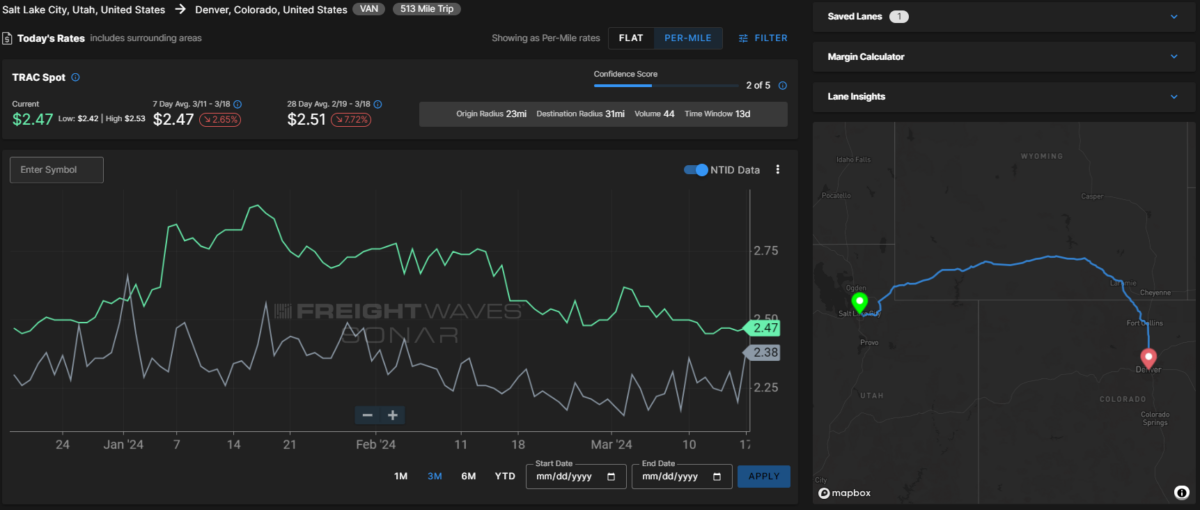
The battle over the independent contractor law in California rages on. Nicknamed AB5, the law changes how a lot of workers are classified. It matters in the transportation world because for carriers that also use owner-operators to haul freight, it classifies many of those owner-operators as employees versus independent contractors. To catch up on how we got here, check out some of the previous articles about it.
Why it matters now is that it’s back in the federal courts. After the U.S. Supreme Court denied a request by the California Trucking Association to review a ruling in a long-running case on AB5, the case went back to the U.S. District Court for the Southern District of California. A decision by that court has finally come, and it isn’t in favor of plaintiffs CTA or the Owner-Operator Independent Drivers Association.
Judge Roger Benitez imposed an injunction against AB5 the first time but this time refused to do so. “Remedying complexities and perceived deficiencies in AB5 are the kind of work better left to the soap box and the ballot box than to the jury box,” Benitez wrote in his decision. “If sufficient political or economic pressure can be brought to bear by [CTA and OOIDA] and their supporters, the more onerous provisions of the statute can be amended. The courts, on the other hand, are not the proper bodies for imposing legislative amendments.”
On the other side of the fight, CTA and OOIDA had argued that a federal law, nicknamed FAAAA, created an “implied preemption” blocking AB5. FreightWaves’ John Kingston summarizes Benitez’s dismissal of that argument: “‘Implied preemption might have a place,’ Benitez wrote. But an argument that it is impossible to comply with the FAAAA because of AB5 falls short. ‘It is not impossible for truck drivers to comply with both federal and state law because there is simply no federal standard of classification requiring compliance. The FAAAA does not dictate that truck drivers must be classified as independent contractors or that drivers are not subject to state wage and hour laws.’”
Despite Benitez’s dismissal of the case, the war will inevitably rage on. The OOIDA is looking at an appeal, and due to the oversupply of trucks in the market, it’s unlikely that rates will be significantly affected for a while as the cards fall where they may.

TRAC Tuesday. This week’s TRAC lane goes out West: Salt Lake City to Denver. The 513-mile trip through the Rockies comes in at $2.47 per mile, which is about 9 cents higher than the National Truckload Index. Outbound tender volumes have risen 6.36% week over week in Denver. The Outbound Tender Reject Index in Denver has come down to just 2.21%, which signals that most everything is getting picked up and there isn’t much strain on capacity. A similar story is happening in Salt Lake City, with the OTRI at 1.46% and outbound tender volumes trending downward slowly. Overall spot rates for this lane should begin trending downward to be right in line with the NTI.

Who’s with whom? Everyone and their brother is setting up some form of operations in Mexico; that’s nothing new. In the middle of this nearshoring boom is Wise PanAmerican Solutions. The Austin, Texas-based company offers services to help firms expand or establish cross-border operations. In an article by FreightWaves’ Noi Mahoney, Tatina Skumatenko, who oversees WPS’ business development between the U.S. and Mexico, says “This year started with an increase in demand for our services as compared to the previous year. It may be related to the fact that nearshoring projections are expected to reach their peak in 2024-2025.” The metaphorical gold rush of nearshoring has to come to an end at some point, and it looks like it’s got a year or so left.
“Mexican carriers importing U.S. goods have been some of the biggest beneficiaries of [nearshoring], as the number of vehicles registered for cross-border shipping grew by 14.3% and the average fleet size grew by 11.3% in 2023. The market’s overall growth was 2.3%, compared to a U.S. trucking market that saw a 6.6% contraction.” Motive said in its economic report for March.
The more you know
Michigan trucker guilty of setting Swift Transportation trailers on fire
Borderlands Mexico: Container shipments from China to Mexico skyrocketed in January
Heale incentivizes complete, accurate data sharing
Flock reports layoffs, path to profitability
Location, cost drive international firms south of the border













